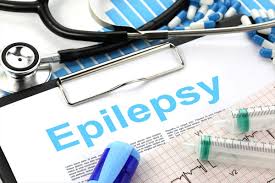Written by: Dr Syed Muhammad Saqib Mehmood
It was a typical Saturday night, and the MM Alam Road (Gulberg, Lahore) was alive with the hum of weekend activities. I was walking to a restaurant with my family when I heard the roar of a motorcycle engine. A rider wearing a bright red jacket was cruising down the road. Suddenly, the bike swerved erratically. At first, I thought the rider was avoiding something on the road, but then the bike tipped over, skidding to a halt. The rider was motionless for a moment before starting to convulse. It was clear that the rider was having a seizure. Seeing him seizing, I rushed to help, but I had no medical training to help in this intense situation.
I immediately removed his helmet so that he could breathe freely. Next, I dialled 1122 to get the necessary medical help. In a moment, ambulance sirens filled the air. The paramedics quickly assessed the situation and provided first aid. Watching him recover after medical help was a massive relief for me. This incident shook me, and I was distressed for days. I realized just how little I understood about seizures and how unprepared I was to help in such an emergency. In response to this realization, I committed time to learn more about epilepsy and its implications. To begin, I consulted Dr. Muhammad Usman Javaid from Mayo Hospital in Lahore, who shared valuable insights on epilepsy, including its various types, triggers, first aid, and effective strategies to support individuals experiencing seizures. Below, I share with you a few learnings from our conversation.
What is Epilepsy?
Epilepsy is a neurological disorder characterized by the occurrence of spontaneous seizures. These seizures occur due to an imbalance of excitation and inhibition in the brain, resulting in a surge of excitement that temporarily disturbs brain activity and affects communication between brain cells. This usually stems from the dysfunction or death of cells responsible for maintaining inhibition. When it comes to seizures, there is no fixed pattern; a person might experience one seizure a day or one every six months. It mainly depends on how stressed a person is. An episode of seizure event usually lasts for 1-2 minutes. Still, if someone experiences a seizure lasting longer than 5 minutes, they must be taken to the hospital immediately, as prolonged seizures can lead to permanent brain damage or even death.
In Pakistan, the prevalence of epilepsy is estimated to be around 9 per 1,000 people, affecting more than 2 million people, which is a very high ratio, yet it remains widely misunderstood and stigmatized. It’s time to shed light on this condition and work towards creating a more inclusive and supportive society for those living with epilepsy.
Education about First Aid
First and foremost, raising awareness about proper seizure first aid is essential. Many people are unsure of how to help someone experiencing a seizure, which can lead to unnecessary panic and potentially harmful actions. Educating the public about simple yet effective first-aid measures can make a significant difference in ensuring the safety and well-being of individuals with epilepsy. To understand what steps to take when assisting someone during a seizure, Dr. Usman Javaid advised taking the following considerations:
- Clear the area to prevent additional injuries.
- Place the person on their side to keep the airway clear.
- Do not put anything in their mouth, as the person has no control and can injure their teeth or tongue.
- Only move them if they are in danger, such as near a busy road
- Cushion their head if they are on the ground.
- Loosen any tight clothing around their neck, such as a collar or tie, to aid breathing.
- Allow the seizure to run its course; do not restrain the person.
- Note the time the seizure starts and finishes. Observe whether they lost consciousness. If the seizure lasts longer, immediately call an ambulance.
- Stay with them and talk to them calmly until they recover.
Treatment for Epilepsy
Although more than 50% of patients who receive proper treatment live seizure-free lives, treatment of seizures often involves the use of anti-seizure medicines. Most people with epilepsy will stop having seizures after trying just one or two medicines. However, If treatment with at least two anti-seizure medicines isn’t effective, surgery is a viable option. Surgery is most effective for individuals whose seizures always begin in the same place in the brain. If the area of the brain where seizures start cannot be removed or disconnected, regenerative medicine or devices that provide electrical stimulation may help to reduce the seizure burden.
Potential future treatments
Dr. Usman mentioned that researchers are actively trying to develop new potential therapies to treat seizures. Two promising therapies include regenerative medicine and electrical stimulation.
- Regenerative Medicine: Dr. Muhammad Nauman Arshad (Tufts University) has published multiple studies indicating that neural stem cell transplantation is a viable method to reduce seizures in animal models of epilepsy. His research shows that transplanted stem cells differentiate into inhibitory neurons and form connections with the host brain excitatory neurons, thereby reducing seizures. This work has real-life implications; based on this principle, we can use a patient’s own stem cells for transplantation to reduce seizure burden, known as autologous transplant, meaning there would be no risk of rejection of the new neurons. Other scientists, including Dr. Ashok Shetty (Texas A & M) and Dr. Scott Baraban (University of California, San Francisco), have also reported similar findings.
- Electrical Stimulation for Seizure Relief: Various stimulation devices can provide relief for individuals experiencing seizures. Notable among these are Responsive neurostimulation and Deep brain stimulation. Dr. Vikram R Rao (University of California, San Francisco) has worked extensively to improve responsive neurostimulation. This approach involves implanting a device on the surface of the brain or within brain tissue. The device detects seizure activity and delivers electrical stimulation to stop the seizure. Eyiyemisi Damisah (Yale University), an epilepsy specialist, advocates for Deep brain stimulation as an approach to reduce the seizure burden in patients. For deep brain stimulation, thin wires called electrodes are implanted in specific brain areas to generate electrical impulses. The impulses regulate the brain activity, which leads to seizure suppression.
Accessible Healthcare and Inclusive Environment
It is also important to advocate for accessible healthcare for individuals with epilepsy. Many face obstacles in obtaining the medical care and support they require. Therefore, we need to advocate for improved healthcare resources and support systems so we can empower individuals with epilepsy to lead fulfilling and independent lives. Lastly, we must confront the social stigma associated with epilepsy. Many individuals with epilepsy experience discrimination stemming from misconceptions. It is time that the public understands that epilepsy is not contagious and does not diminish a person’s intelligence or capabilities. It is vital to debunk these myths to foster understanding and empathy, creating a more compassionate community for people with epilepsy.
Conclusion
In conclusion, promoting awareness and understanding of epilepsy is critical in building a more inclusive and supportive society. By educating the public about seizure first aid, advocating for accessible healthcare, and combating social stigma, we can make a positive impact on the lives of individuals with epilepsy. Let’s work together to build a more empathetic and inclusive environment for them.














